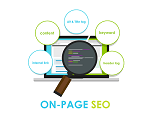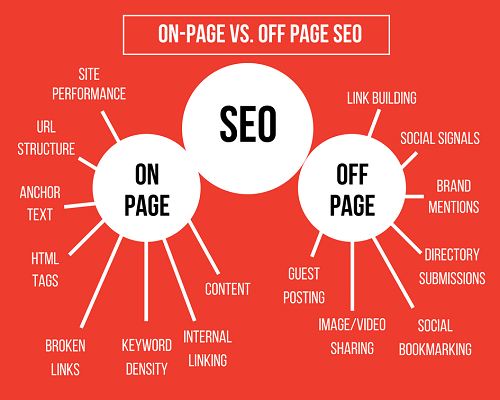What You Need to Know About On-Site SEO
 As an SEO copywriter or anyone who wants to start a website, there are important factors to think of. We first need to take note of on-site SEO before we explore off-page SEO (link building etc.) The reality is that having off-page SEO won’t be of any good if you don’t follow the fundamentals of on-site SEO.
As an SEO copywriter or anyone who wants to start a website, there are important factors to think of. We first need to take note of on-site SEO before we explore off-page SEO (link building etc.) The reality is that having off-page SEO won’t be of any good if you don’t follow the fundamentals of on-site SEO.
On-site SEO must be a priority for every expert in the field. We define what on-site SEO entails for old writers to polish their methods and new ones to join in the conversation.
What is On-Site SEO?
On-Site SEO is also referred to as On-Page SEO means optimizing web pages to improve the sites ranking on search engines and get organic traffic.
Page optimization takes different elements of a page into account, this includes:
- Research
- Headings
- Quality Content
- Mata Title, Meta Description, and Pictures
- User Engagement
When all of these aspects have been applied onto a webpage, we hope it helps the page become more visible when users search for it. At the end of the day, the page must translate into being trusted, be of a high standard and written by an expert.
Top 5 On-Site SEO Factors
1. Research
Research your topic on Google thoroughly and pay attention to what people are searching for.
Use different SEO tools like Semrush, Keyword planner and others to get relevant keywords.
Analyze the content from ranking pages and pay attention to their target keyword.
Ensure that you answer questions that users might have about the topic.
2. Headings
Within your content, there will be headings and subheadings. Headings give you more information about your content and related keywords should be inserted. On the other hand, headings can affect your ranking indirectly in the following ways:
- Your content will be easier and visitors will enjoy reading it.
- It will provide a keyword-rich context about your content for the search engines.
3. Quality Content
Before rushing to write new content you have to do a content audit, which means regularly checking your existing content to evaluate its relevance. Long-form content is preferred because it addresses as many user concerns as possible. Most search engines prefer this type of content.
Insert links within the content and call to actions on the page.
You need to remember that Google has a process on how to access websites and pages. It always looks for high-quality content. Therefore, you need to make sure that you write something worthwhile/relevant and substantial.
Keyword placement is important.
Google raters use authoritativeness, trustworthiness, and expertise to access your pages and website.
Make sure that keyword cannibalization doesn’t exist within your content. It’s not ideal to target the same keyword across different pages.

4. Title, Meta Description, Pictures and URLs
The title provides you a bit of information about the page and should have the keyword.
Meta Description gives you a description of what the page is about and the keyword needs to be inserted.
Images (title, alt tags) need to be optimized properly to load faster and is a great opportunity to use your keywords.
Make sure that you have clean URL structures. Crawl your website and attend to any errors that occur. Content must no link to redirected pages or broken.
5. User Engagement
We all want users to stay continued coming to our sites but that’s a challenge on its own. However, we can increase our user engagement by optimizing content, checking page speed, providing a friendly user experience and more. Ask yourself questions like, how can your content be more engaging?
On-Site SEO Matters
- On-Site SEO is important because it allows search engines to understand your content and website. It will then decide whether it’s relevant or not to a specific search.
- An SEO copywriter should apply the right principles when optimizing a page and our top 5 factors are the basis of optimizing any page.
Latest SEO Rank Movers Posts
- Meta Tags for SEO: Why HTML Metadata is Important
- 7 Best Tips for Creating an SEO Writing Template
- A Beginner’s Guide to Website Conversion Rates


